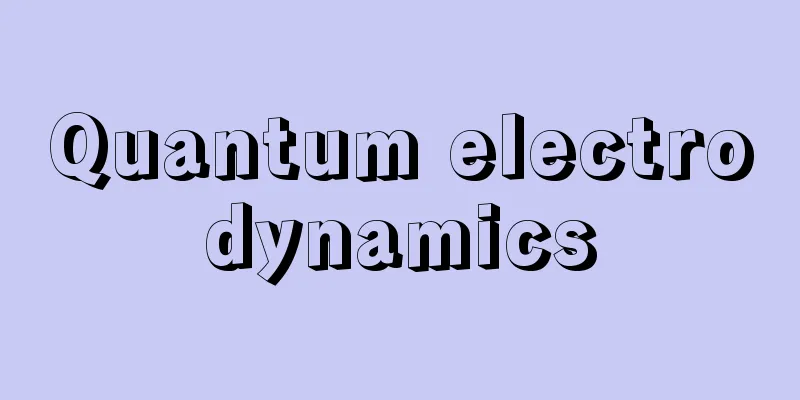Palpitations

|
Concept Palpitations is a general term for the symptom of an unpleasant irregular heartbeat or pulse that is usually unnoticed; it is roughly synonymous with palpitations, but is not caused by any specific disease. Patients describe palpitations in a variety of ways, including "my heart is pounding," "my heart is pounding," "my pulse is skipping," "my chest is being pushed up," and "I feel short of breath." It is important to note that there are large individual differences in how palpitations are felt, and that some people may feel that palpitations are severe even when they have a psychogenic arrhythmia or an arrhythmia that is not a cause for concern, while others may not complain of palpitations even if they have a severe arrhythmia that is life-threatening. The reasons for individual differences in how palpitations are felt are not well understood, in part because knowledge about the sensory nerves from organs remains unclear. Table 2-34-1 shows diseases that can cause palpitations. Palpitations have many causes, but because they can be associated with severe heart disease or can be caused by severe bradyarrhythmia or ventricular tachycardia and require emergency treatment, diagnosis requires first checking vital signs and recording an electrocardiogram. In addition, because tachycardia can be caused by a variety of diseases, it may be necessary to listen carefully to other accompanying symptoms and to undergo various tests in addition to physical findings. In a survey of 190 patients who visited the hospital complaining of palpitations, 43% of patients had a cardiac cause, with the most common causes being atrial fibrillation, supraventricular tachycardia, ventricular premature contractions, atrial flutter, and ventricular tachycardia. The next most common cause was psychogenic at 31%, followed by other causes such as medication and hyperthyroidism in 10%, and the cause was unknown in 16% of cases. Pathophysiology: It is physiological that the heart rate increases during exercise or mental excitement and palpitations are felt, but palpitations can also be felt in the following cases. 1) It is caused by irregular pulse, which can be caused by various arrhythmias. 2) It is caused by an increase in pulse rate. In addition to tachyarrhythmia caused by heart disease, heart failure, endocrine diseases, respiratory diseases, anemia, and hypoglycemia can also cause palpitations due to tachycardia. 3) It is caused by an increase in stroke volume or myocardial contractility. When there is extreme bradycardia due to sick sinus syndrome or complete atrioventricular block, palpitations may be reported due to an increase in stroke volume. In addition to feeling palpitations due to irregular pulse in premature ventricular contractions, the left ventricular end-diastolic volume increases after the compensatory pause following early contraction due to the longer diastolic period, which also causes palpitations. In addition to arrhythmias, palpitations due to an increase in stroke volume may be felt in patients with valvular diseases such as aortic regurgitation and congenital heart disease with left-to-right shunts. In addition, palpitations may be felt due to an increase in stroke volume in patients with aortic stenosis and hypertension, as the increased afterload increases the cardiac contractility. On the other hand, these various heart diseases and high blood pressure can be complicated by arrhythmias, so caution is required. 4) Psychogenic conditions include panic disorder, anxiety neurosis, and hyperventilation syndrome. Differential diagnosis The basis for the differential diagnosis of palpitations is to take a detailed medical history, physical examination, and recording of an electrocardiogram. When interviewing the patient about symptoms, it is also important to ask about the characteristics and duration of the palpitations, how they start and end, whether there are any precipitating factors, whether there are any accompanying symptoms, their frequency, medications being taken, and whether there is a family history of sudden death. In addition, echocardiography is often indicated to differentiate between cardiac diseases. 1) Palpitations due to arrhythmia and heart disease: Premature ventricular contractions, paroxysmal tachycardia, atrial fibrillation, and flutter are often reported as palpitations, but bradyarrhythmia due to sick sinus syndrome and atrioventricular block can also be felt as palpitations due to an increase in cardiac output per stroke. With premature ventricular contractions (supraventricular and ventricular), patients often complain of a palpitations or feeling of palpitations in the chest, but some also experience symptoms such as shortness of breath. At these times, patients may also complain of a stasis in the pulse, or of a jumping or skipping pulse. However, it is not uncommon for patients to not complain of symptoms even when premature ventricular contractions occur frequently. When palpitations are felt suddenly, continue for a while, and then suddenly stop, paroxysmal tachycardia, atrial fibrillation, or atrial flutter should be suspected. In the case of sinus tachycardia during exercise or mental excitement, the pulse rate gradually increases, and when it subsides, the pulse rate gradually decreases, which is a differential diagnosis. Supraventricular tachycardia is a regular tachycardia of about 150 to 200 beats per minute. Atrial flutter is often a regular tachycardia, but in atrial flutter, which shows a variable conduction ratio, the pulse is irregular. In atrial fibrillation, the pulse is usually irregular (absolute arrhythmia), but it is often difficult for patients to determine whether the pulse is regular or irregular. In ventricular tachycardia, when the heart rate is high or in patients with reduced cardiac function, blood pressure may drop and dizziness or fainting may occur, but in patients with normal cardiac function, there may be no complaints other than palpitations. In the diagnosis of severe ventricular arrhythmia and bradyarrhythmia, it is important to ask about the presence or absence of fainting, dizziness, or lightheadedness in addition to palpitations. In particular, emergency treatment may be required for severe ventricular arrhythmias such as ventricular tachycardia, and bradyarrhythmias such as sick sinus syndrome and atrioventricular block. Furthermore, patients with heart failure who have reduced cardiac reserve often complain of tachycardia during exertion. When palpitations are felt while standing, followed by occasional dizziness or fainting, neuromediated syncope may be considered. If palpitations are present at the time of admission, a standard 12-lead electrocardiogram can often be used to diagnose the condition. If the patient is asymptomatic at the time of admission, a Holter electrocardiogram (24-hour electrocardiogram) should be performed if the patient's symptoms are severe or if a serious illness is suspected. If palpitations occur infrequently, a loop recorder can also be useful. If palpitations are accompanied by fainting or loss of consciousness, electrophysiological testing may be required to diagnose severe arrhythmias. It is important to note that when a patient complains of palpitations, it is important not only to diagnose the presence or absence of arrhythmia, but also to be careful not to overlook symptoms or physical findings that suggest diseases other than cardiac disease that cause tachycardia, as described below, or heart failure or angina pectoris, which may be reported as palpitations. For the diagnosis of heart failure, the presence or absence of dyspnea or fatigue during exertion, leg edema, and cardiac enlargement on chest X-ray are important, and BNP (brain natriuretic peptide) is measured in blood tests. If there is chest tightness during exertion, the presence of angina pectoris should be suspected, and an exercise stress electrocardiogram should be performed in addition to a Holter electrocardiogram. 2) Conditions that cause palpitations other than heart disease: Diseases other than heart disease that can cause tachycardia include endocrine diseases such as hyperthyroidism and pheochromocytoma. Hyperthyroidism should be suspected if there is excessive sweating, irritability, weight loss, goiter, or exophthalmos. Pheochromocytoma should be suspected if there is headache, excessive sweating, high blood pressure, hyperglycemia, and other symptoms caused by an excess of catecholamines. Symptoms can be paroxysmal or persistent, and if suspected, quantitative hormone testing is required. Other conditions that can cause tachycardia due to hypoxemia include respiratory diseases, anemia, fever, and hypoglycemia. Regarding drugs, cardiac inotropes such as digitalis and catecholamines can cause palpitations by increasing cardiac output or myocardial contractility, but caution is also required regarding arrhythmia as a side effect. Tachycardia can also be caused by reflex sympathetic nerve stimulation due to a sudden drop in blood pressure caused by antihypertensive drugs, and by drugs with anticholinergic effects. Psychogenic palpitations such as those caused by panic disorder, anxiety neurosis, hyperventilation syndrome, and menopausal syndrome are often diagnosed because they are accompanied by other vague symptoms and no abnormalities are found in electrocardiograms or other tests during the attack. It is important to ease the patient's anxiety, but cooperation with psychosomatic medicine and psychiatry is also important. [Hayashi Hideharu] ■ References Abbott AV: Diagnostic approach to palpitations. Am Fam Physician, 71: 743-750, 2005. Giada F, Gulizia M, et al: Recurrent unexplained palpitations (RUP) study. J Am Coll Cardiol, 49: 1951-1956, 2007. Weber BE, Kapoor WN: Evaluation and outcomes of patients with palpitations. Am J Med, 100 : 138-148, 1996. Causes of palpitations Table 2-34-1 Source : Internal Medicine, 10th Edition About Internal Medicine, 10th Edition Information |
|
概念 動悸とは,通常自覚しない心臓の拍動や脈の乱れを不快に感じる症状の総称であり,心悸亢進とほぼ同義であるが,特定の疾患によるものではない.患者が動悸を表現するときには,“心臓がドキドキする”,“心臓がドキッとする”,“脈がとぶ”,“胸が突き上げられる”,“息がつまる”など多彩な訴えをする.動悸の感じ方には個人差が大きく,心因性のものや,心配を要さない不整脈を強い動悸と感じることもあれば,生命に危険がある重症不整脈患者が動悸を訴えないこともあることに注意が必要である.動悸の感じ方に個人差がある理由に関しては,臓器からの知覚神経に関する知見がいまだに不明確なこともあってよくわかっていない. 動悸の原因となる疾患を表2-34-1に示す.動悸の原因は多岐にわたるが,重症の心疾患に伴う場合や,高度の徐脈性不整脈や心室頻拍など緊急を要することがあるため,診断にあたっては,まずバイタルサインの確認と心電図の記録が必要である.また,頻脈をきたす種々の疾患が原因となるために,随伴するほかの症状を注意深く聴取することや,身体的所見のほかにも種々の検査が必要になることがある.動悸を訴えとして来院した190名の調査では,心臓に原因があった患者が43%であり,その頻度は心房細動,上室性頻拍症,心室性期外収縮,心房粗動,心室頻拍の順であった.次いでは心因性が31%と多く,薬剤によるものや甲状腺機能亢進症などのその他の原因によるものが10%あり,全体の16%では原因不明であった. 病態生理 運動時や精神的興奮時に心拍数が増えて動悸を感じるのは生理的なものであるが,以下のようなときに動悸を感じる.①脈の不整によるもので,原因としては種々の不整脈がある.②脈拍数が増えることによるもので,心疾患による頻脈性不整脈以外にも心不全や後述する内分泌疾患や呼吸器疾患,貧血,低血糖などが,頻脈による動悸を起こす原因となる.③1回心拍出量または心筋収縮力の増大によるもので,洞不全症候群や完全房室ブロックで極端な徐脈があるときには,1回心拍出量の増加のために動悸を訴えることがある.期外収縮では脈の不整を動悸として感じる以外に,早期収縮後の代償性休止後には,拡張期が長くなるために左室拡張末期容量が増加して心拍出量が増大することも,動悸を感じる原因となる.不整脈以外でも,大動脈閉鎖不全症などの弁膜疾患や左右短絡を有する先天性心疾患では,1回心拍出量の増加による動悸を訴えることがある.また,大動脈弁狭窄症や高血圧では,後負荷の増大により心収縮力が増強して動悸を感じることもある.一方,これらの各種心疾患や高血圧では,不整脈を合併することがあるので注意が必要である.④心因性のものとして,パニック障害,不安神経症や過換気症候群がある. 鑑別診断 動悸の鑑別診断のためには,詳細な病歴の聴取,身体的所見,心電図の記録が基本である.症状の問診においては,動悸の特徴と持続時間,始まり方と終わり方,誘発因子の有無,随伴症状の有無,頻度,服用している薬剤を聞くこと,そして突然死の家族歴の有無の聴取も重要である.また,心疾患の鑑別のために心エコー検査が適応となることが多い. 1)不整脈および心疾患による動悸: 期外収縮や,頻脈性不整脈の発作性頻拍症,心房細動・粗動が動悸として訴えられることが多いが,洞不全症候群や房室ブロックによる徐脈性不整脈も1回心拍出量の増加により動悸として感じられることがある.期外収縮(上室性,心室性)では,胸がドキッとする,ドキドキすると訴えることが多いが,息が詰まるとの症状もある.また,このときに脈の結滞,または脈がはねたり,とんだりすると訴えることもある.一方,期外収縮が頻発していても症状を訴えないこともまれではない. 急に動悸を感じてしばらく続き,また急に停止するときには発作性頻拍症,心房細動,心房粗動を疑う.運動時や精神的興奮時の洞性頻脈では,徐々に脈拍が増えて,おさまるときにも徐々に脈拍が減少することが鑑別となる.上室性頻拍症は毎分150〜200くらいの規則的な頻脈である.心房粗動も規則的な頻脈であることが多いが,不定の伝導比を示す心房粗動では脈は不整となる.心房細動では,通例脈拍が不整(絶対性不整脈)であるが,患者にとっては脈が規則的か不規則かの判断が困難であることが多い.心室頻拍では,心拍数が多いときや心機能が低下している患者では血圧低下やめまい・失神をきたすこともあるが,正常の心機能であれば動悸以外の症状を訴えないこともある.重症心室性不整脈や徐脈性不整脈の診断においては,動悸以外にも失神,めまい,ふらつきの有無を聞くことが重要である.特に心室頻拍などの重症心室性不整脈や,洞不全症候群や房室ブロックなどの徐脈性不整脈では緊急の治療が必要になることもある.また,心予備能が低下している心不全では,労作時に頻脈を訴えることが多い.立位で動悸を感じた後にときにふらつきや失神をきたすときには,神経調節性失神を考える. 来院時に動悸があれば,多くは標準12誘導心電図を記録することで診断が可能である.来院時には症状がない場合には,患者の症状が強いときや,重篤な疾患を疑われるときにはHolter心電図(24時間心電図)を施行する.動悸の頻度が少ないときには,ループレコーダーも有益である.動悸に随伴して失神や意識消失があれば,重症の不整脈を診断するために電気生理学的検査が必要となることもある.注意を要することは,動悸の訴えがあるときには,不整脈の有無を診断するだけではなく,後述するような頻脈を起こす心疾患以外の病気や,動悸として訴えられることがある心不全や狭心症を示唆する症状や身体的所見を見逃さないようにすることである.心不全の診断には,労作時の呼吸困難や易疲労感,下腿浮腫や胸部X線における心拡大の有無が重要であり,血液検査ではBNP(脳性ナトリウム利尿ペプチド)が測定される.労作時の胸部圧迫感があるときには狭心症の存在を疑い,Holter心電図のほかに運動負荷心電図の施行を考える. 2)心疾患以外で動悸を起こす病態: 心疾患以外で頻脈となる疾患として,甲状腺機能亢進症,褐色細胞腫などの内分泌疾患がある.発汗過多,いらいら感,体重減少があり,甲状腺腫や眼球突出があれば甲状腺機能亢進症を疑う.カテコールアミン過剰による症状である頭痛,発汗過多があり,高血圧,高血糖などがあれば褐色細胞腫を疑う.その症状は発作性のこともあれば持続型のこともあり,疑ったときにはホルモンの定量が必要となる.そのほかには,低酸素血症による頻脈を起こす呼吸器疾患,貧血,発熱,低血糖がある. 薬剤に関連して,ジギタリスやカテコールアミンなどの強心薬は,1回心拍出量または心筋収縮力の増大により動悸をきたすことがあるが,副作用としての不整脈にも注意が必要である.その他,降圧薬による急激な血圧低下による反射性交感神経刺激や,抗コリン作用のある薬剤によっても頻脈をきたすことがある. パニック障害,不安神経症,過換気症候群や閉経期症候群などの心因性の動悸は,ほかの不定愁訴が多いことや,発作時の心電図やほかの検査で異常を認めないことから診断されることが多い.患者の不安を和らげることが重要であるが,心療内科や精神科との連携も考える.[林 秀晴] ■文献 Abbott AV: Diagnostic approach to palpitations. Am Fam Physician, 71: 743-750, 2005. Giada F, Gulizia M, et al : Recurrent unexplained palpitations (RUP) study. J Am Coll Cardiol, 49: 1951-1956, 2007. Weber BE, Kapoor WN: Evaluation and outcomes of patients with palpitations. Am J Med, 100 : 138-148, 1996. 動悸の成因"> 表2-34-1 出典 内科学 第10版内科学 第10版について 情報 |
>>: Synchronization - Synchronization
Recommend
Consignment money - itakukin
〘noun〙 Money entrusted with management, operation,...
Continuously variable transmission - mutanhensokusouchi
A transmission is a device that can continuously c...
spastic paralysis
…The appearance of motor paralysis varies dependi...
《Pyotr I》(English spelling) PyotrI
…Although it contains many melodramatic elements,...
Engakuji Temple (Aomori)
...The town is centered on agriculture, forestry ...
Golden Rule
Golden Rule in English. The fundamental ethics of ...
Mengs, Anton Raphael
Born: March 22, 1728 in Ausch, Bohemia Died June 2...
Ion Conduction - Ion Dendou
The phenomenon in which electric charge is transp...
Magelang (English spelling)
A city in central Java, Indonesia. Population 123,...
artificial ventilation
...Also, if the lungs are not functioning properl...
Teirangana Struggle - Teirangana Struggle
An armed peasant struggle that took place in the T...
pâte à foncer (English spelling) pateafoncer
… There is also an instant folded pie dough, whic...
Heishi Rebellion
The second invasion of Korea by the Qing Dynasty o...
The Shocho Earth Uprising
This was an uprising of peasants demanding virtuo...
Kasugamycin
C 14 H 25 N 3 O 9 (379.37). An aminoglycoside ant...









